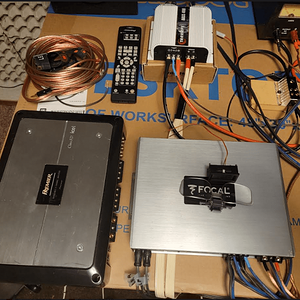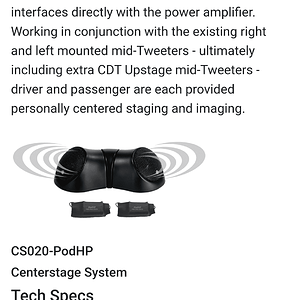celshady
Junior Member
Hi //content.invisioncic.com/y282845/emoticons/smile.gif.1ebc41e1811405b213edfc4622c41e27.gif
I've been running a cheapo active Edge EDB12A sub for about 5 years.
About 6 months ago I noticed the centre of the cone had come away and it was buzzing. Sooo, I ripped it off and used some adhesive resin to glue it back. Wasn't really thinking beyond 'fix it'. From this point onwards the bass was still there but only in volume - I'd lost all my low frequencies.
I put up with it for a bit but it was essentially pointless. This week I decided to shove a new woofer in the box rather than buy a whole new box - genius thinking right? I took the old edge woofer out, measured the depth of the box quickly and badly with a Tintin ruler I got for my 14th birthday, decided I had enough space for a JBL GT5 and bought one.
Today it arrived and I shoved the GT5 in and remounted it, using maybe 4 of the old screw holes and making 4 new holes very close to the old ones because I'm a thorough kind of chap. It was a bit of a squeeze, and for a while I thought it was resting on the port tube thingemer, but a bit of wiggling got it past whatever the obstruction was (possibly the amp mounting bit, which had been shaved off anyway). I have no idea how close the coil is to the tube, but my best guess is very.
Preparing myself for it to vibrate against the tube and make me sad I stuck it in the car and connected it up (thanking sweet baby Jesus for the quick release kit), turned the gain and boost down to half for the running-in period and tried it out.
It seems fine. No vibration suggesting I've mounted it badly or I'm hitting the tube.
I can't imagine I'm the first person to try this, so has anyone else done something similar? Anything I should know or look out for?
I've been running a cheapo active Edge EDB12A sub for about 5 years.
About 6 months ago I noticed the centre of the cone had come away and it was buzzing. Sooo, I ripped it off and used some adhesive resin to glue it back. Wasn't really thinking beyond 'fix it'. From this point onwards the bass was still there but only in volume - I'd lost all my low frequencies.
I put up with it for a bit but it was essentially pointless. This week I decided to shove a new woofer in the box rather than buy a whole new box - genius thinking right? I took the old edge woofer out, measured the depth of the box quickly and badly with a Tintin ruler I got for my 14th birthday, decided I had enough space for a JBL GT5 and bought one.
Today it arrived and I shoved the GT5 in and remounted it, using maybe 4 of the old screw holes and making 4 new holes very close to the old ones because I'm a thorough kind of chap. It was a bit of a squeeze, and for a while I thought it was resting on the port tube thingemer, but a bit of wiggling got it past whatever the obstruction was (possibly the amp mounting bit, which had been shaved off anyway). I have no idea how close the coil is to the tube, but my best guess is very.
Preparing myself for it to vibrate against the tube and make me sad I stuck it in the car and connected it up (thanking sweet baby Jesus for the quick release kit), turned the gain and boost down to half for the running-in period and tried it out.
It seems fine. No vibration suggesting I've mounted it badly or I'm hitting the tube.
I can't imagine I'm the first person to try this, so has anyone else done something similar? Anything I should know or look out for?


